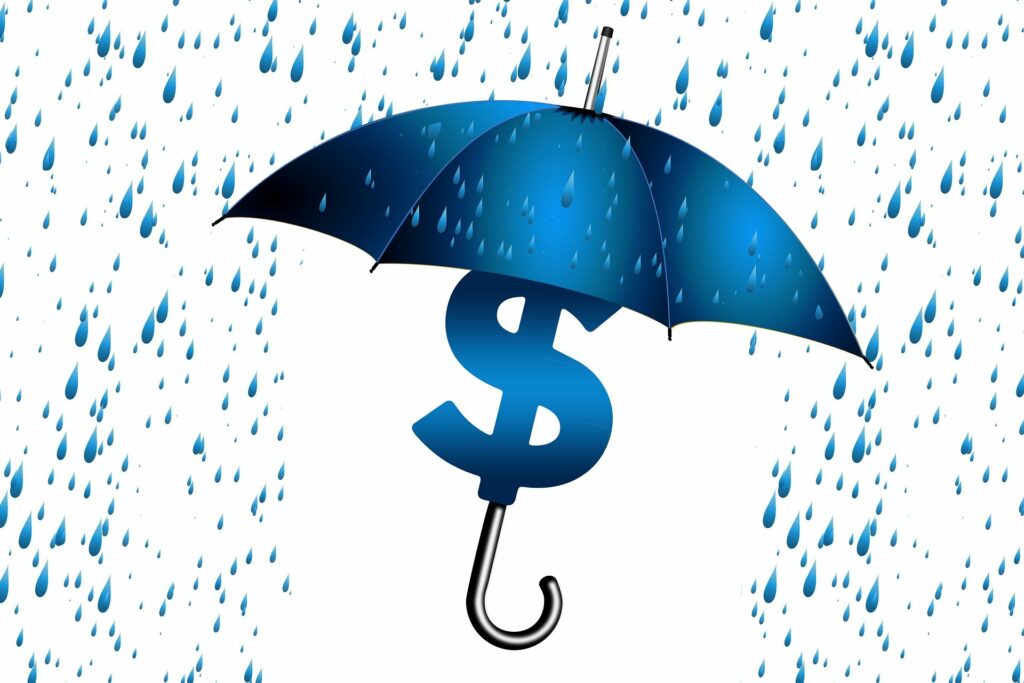Complete Guide to Health Savings Accounts (HSA): How to Triple Your Healthcare Savings
You’re probably leaving thousands of dollars on the table every year. Most Americans with access to a health savings account either don’t use it or drastically underutilize its potential. That’s frustrating because an HSA offers the most powerful tax advantages in the entire tax code—better than your 401(k), better than an IRA, and certainly better than a regular savings account.
Healthcare costs keep climbing. The average American family now spends over $12,000 annually on health insurance and medical expenses. Meanwhile, an HSA sits waiting to help you pay those bills with pre-tax dollars while building wealth for retirement. Let’s change how you think about healthcare savings.
What Makes Health Savings Accounts Different
A health savings account is a special savings vehicle that works exclusively with high-deductible health plans. You contribute pre-tax money, it grows tax-free, and you withdraw it tax-free for qualified medical expenses. That’s triple tax savings—something no other account type offers.
Think of your HSA as a Swiss Army knife for healthcare costs. You can use it for doctor visits, prescriptions, dental work, vision care, and even some over-the-counter medications. The funds roll over year after year, unlike flexible spending accounts that operate on a use-it-or-lose-it basis.
For 2024, you can contribute up to $4,150 for individual coverage or $8,300 for family coverage. If you’re 55 or older, add another $1,000 as a catch-up contribution. These limits typically increase each year to keep pace with inflation.
Here’s what makes HSAs remarkable: the money is yours forever. You own it completely. Change jobs? The account moves with you. Retire? Start using it for Medicare premiums and other healthcare costs. It’s portable, flexible, and incredibly powerful when used correctly.
The Triple Tax Advantage Explained
Most people understand that maximizing tax deductions can significantly improve your financial position. HSAs take this concept to an entirely different level.
Your contributions reduce your taxable income immediately. Contribute $5,000 to your HSA, and you’ve just reduced your taxable income by that amount. In the 22% tax bracket, that’s $1,100 in tax savings right there.
The second advantage happens while your money sits in the account. Any interest earned or investment gains grow completely tax-free. No capital gains taxes. No taxes on dividends. Nothing. This tax-free growth can compound dramatically over decades.
The third benefit arrives when you spend the money. Withdraw funds for qualified medical expenses at any age, and you pay zero taxes. Compare this to traditional retirement accounts where you’ll owe income tax on every dollar withdrawn.
Let’s make this concrete. Say you contribute $300 monthly to your HSA for 25 years, earning an average 7% annual return. You’d have approximately $237,000. In a taxable account, you’d owe thousands in taxes on those gains. In an HSA? You keep every penny for medical expenses.
HSA Benefits vs FSA: Understanding the Critical Differences
Many people confuse health savings accounts with flexible spending accounts. While both help with healthcare costs, they’re fundamentally different animals.
FSAs require you to use your money within the plan year or lose it. Some employers offer a grace period or let you roll over a small amount, but generally, unused FSA funds vanish. HSAs have no such restriction. Your money accumulates indefinitely.
You don’t own your FSA—your employer does. Leave your job mid-year, and you might forfeit remaining funds. An HSA belongs to you permanently, regardless of employment changes.
FSAs allow slightly broader spending categories, including dependent care expenses. HSAs stick strictly to medical costs. However, the trade-off heavily favors HSAs because of ownership and portability.
The contribution limits tell an interesting story too. FSAs cap at $3,200 for 2024. HSAs allow significantly more, especially for families. That higher limit matters enormously if you’re dealing with chronic conditions or planning for future healthcare needs.
Think about your situation carefully. If you have predictable, moderate medical expenses and won’t switch jobs, an FSA works fine. But for building long-term healthcare wealth while maintaining flexibility, HSAs win decisively.
How to Qualify and Open Your Health Savings Account
You can’t just decide to open an HSA tomorrow. You need to meet specific requirements first.
The primary requirement is enrollment in a high-deductible health plan. For 2024, that means a minimum deductible of $1,600 for individual coverage or $3,200 for family coverage. Your plan also must cap out-of-pocket maximums at $8,050 for individuals or $16,100 for families.
You cannot be enrolled in Medicare or claimed as a dependent on someone else’s tax return. You also can’t have other health coverage that disqualifies you, like a general-purpose FSA or a spouse’s comprehensive health plan that covers you.
Opening an HSA is straightforward. Many employers offer HSA options through specific financial institutions. These employer-sponsored HSAs often include free contributions from your company—basically free money you shouldn’t refuse.
If you’re self-employed or your employer doesn’t offer an HSA, you can open one independently. Banks, credit unions, and specialized HSA providers all offer accounts. Compare fees carefully. Some charge monthly maintenance fees, transaction fees, or investment fees that erode your savings.
Look for accounts with low fees and strong investment options. You want an account that lets you invest beyond the initial cash balance. That’s where the real wealth-building happens.
The Investment Strategy: Turning Your HSA Into a Retirement Account
Most people treat their HSA like a basic savings account. They contribute money, spend it on medical bills, and never think deeper about it. That’s fine, but you’re missing the biggest opportunity.
The smartest HSA investment strategy involves paying current medical expenses out-of-pocket while letting your HSA balance grow invested. This requires some financial flexibility, but the payoff is enormous.
Here’s how it works: You contribute the maximum to your HSA each year. When you have medical expenses, you pay them with a credit card or checking account. You keep all your medical receipts meticulously organized. Your HSA balance stays invested and compounds tax-free for years or decades.
Later—maybe at retirement when you need the money more—you reimburse yourself for all those old medical expenses. There’s no time limit on HSA reimbursements as long as the expense occurred after you opened the account. You essentially created a tax-free retirement fund.
Once your HSA balance grows beyond your emergency medical fund threshold (maybe $3,000 to $5,000), invest the excess. Most HSA providers offer mutual funds, index funds, or target-date funds similar to 401(k) options.
Conservative investors might choose bond funds or balanced funds. Aggressive savers pursuing long-term growth often select stock index funds. The key is matching your investment timeline with appropriate risk levels, similar to retirement planning strategies for other accounts.
Qualified Medical Expenses: What Your HSA Actually Covers
Understanding what counts as a qualified medical expense prevents costly mistakes. The IRS maintains a detailed list, and it’s broader than most people realize.
Obviously, doctor visits, hospital stays, surgeries, and prescriptions qualify. But you can also use HSA funds for dental care, vision care, hearing aids, and mental health services. Chiropractors, acupuncturists, and physical therapists all count too.
Many over-the-counter items now qualify following recent rule changes. Pain relievers, cold medicine, first aid supplies, and feminine hygiene products are all fair game. You don’t even need a prescription for most OTC medications anymore.
Some surprising qualified expenses include: smoking cessation programs, weight loss programs for specific diagnosed conditions, breast pumps, guide dogs, and modifications to your home for medical accessibility. Certain insurance premiums qualify too, including long-term care insurance, COBRA coverage, and health insurance while receiving unemployment benefits.
What doesn’t qualify? Cosmetic procedures, gym memberships (usually), vitamins and supplements (unless prescribed), and general health items like toothpaste don’t make the cut.
Keep detailed records. Save receipts, explanation of benefits statements, and documentation. If the IRS questions a withdrawal, you’ll need proof that the expense qualified. Many people scan receipts and store them digitally for decades.
Common HSA Mistakes That Cost You Money
Even financially savvy people make critical errors with their health savings accounts. Avoid these pitfalls to maximize your benefits.
The biggest mistake is treating your HSA as a spending account rather than an investment account. When you drain your HSA every year for minor expenses, you miss the compound growth potential. Those small copays you’re covering with HSA funds could be paid from checking while your HSA grows tax-free.
Many people don’t invest their HSA balance at all. They let thousands of dollars sit in low-interest savings earning practically nothing. Meanwhile, inflation erodes purchasing power year after year. If you’re healthy and financially stable, invest the bulk of your HSA balance.
Another common error involves taking non-qualified withdrawals. Pull HSA money for non-medical expenses before age 65, and you’ll owe income tax plus a punishing 20% penalty. That’s worse than early 401(k) withdrawals. After 65, non-medical withdrawals face only regular income tax, but you’ve still lost the tax-free benefit.
Some people stop contributing once they leave a high-deductible health plan. You can’t make new contributions without HDHP coverage, but you can and should keep your existing HSA. Continue investing it and using it for medical expenses indefinitely.
Don’t forget to claim your HSA contributions on your tax return. If you contribute through payroll deductions, they’re automatically pre-tax. But if you make direct contributions to your HSA, you must claim them when filing to get the deduction. Missing this step means paying unnecessary taxes.
Maximizing Your HSA: Advanced Strategies for Triple Savings
Once you understand the basics, several advanced techniques can amplify your health savings account benefits dramatically.
Consider the "mega HSA" strategy if you can swing it financially. Max out your HSA contributions every year starting in your 30s or 40s. Pay all medical expenses out-of-pocket. Keep meticulous expense records. Let your HSA grow invested for 20-30 years. At retirement, you’ve built a substantial tax-free healthcare nest egg worth potentially hundreds of thousands of dollars.
If you’re 55 or older, both you and your spouse can make catch-up contributions if you each have your own HSA. That’s an extra $2,000 annually that reduces your taxable income while building healthcare reserves for retirement when medical costs typically surge.
Time your HSA contributions strategically within the year. Front-load contributions early in January if possible. This maximizes your investment time horizon and compound growth potential. Every extra month in the market matters over decades.
Use your HSA for expenses you might not have considered. Laser eye surgery, orthodontics, and fertility treatments are all qualified expenses. If you’re planning any of these, an HSA helps you pay with pre-tax dollars.
Consider the interplay between your HSA and other tax-advantaged accounts. In high-earning years, maxing your HSA reduces your taxable income. As part of your broader tax planning strategy, HSA contributions can lower your bracket or reduce exposure to certain tax thresholds.
Finally, remember that HSAs become incredibly flexible after age 65. You can withdraw funds for any purpose without penalty—just regular income tax on non-medical withdrawals. This makes your HSA function like a traditional IRA with the bonus option of tax-free withdrawals for healthcare costs.
Your Next Steps: Building Healthcare Wealth Starting Today
Health savings accounts represent one of the most underutilized tools in personal finance. The triple tax advantage can’t be beaten. The flexibility and ownership structure outpace virtually every other savings vehicle. The potential to build substantial wealth while covering healthcare costs makes HSAs invaluable.
Start by evaluating your current health insurance situation. If you don’t have an HDHP but one’s available during open enrollment, run the numbers. Compare total costs including premiums, deductibles, and potential HSA tax savings. Many people find that HDHPs with maxed-out HSAs cost less overall than traditional plans.
Open your HSA immediately if you’re eligible but haven’t yet. Don’t wait until next month or next year. The sooner you start, the more time your money has to grow tax-free.
Set up automatic contributions to make saving effortless. Whether through payroll deduction or automatic monthly transfers, removing the decision from your daily routine ensures consistency. Treat your HSA contribution like any other essential bill.
Create a system for tracking medical expenses and receipts. Something as simple as a dedicated folder (physical or digital) works fine. You’ll thank yourself later when you’re sitting on substantial tax-free reimbursement potential.
Review your HSA investment options within the next week. If your balance exceeds your emergency medical cushion, move excess funds into appropriate investments based on your timeline and risk tolerance. Building financial security means making your money work hard through smart investment choices.
Healthcare costs aren’t going anywhere except up. You can either watch your money evaporate paying those bills with after-tax dollars, or you can harness the triple tax advantage of HSAs to build wealth while covering medical needs. The



